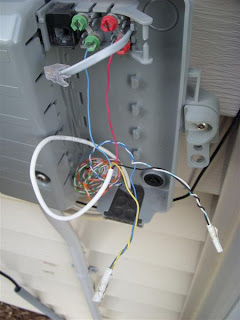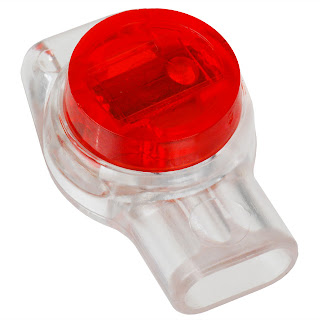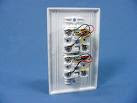If you just have one phone that you want connected to Vonage then everything will work out fine. Its when you plug the Vonage Router via the Telephone cable into the phone jack/biscuit you get a busy signal from the phone.
This is because with voltage running through the pair your Vonage system will send a busy signal to the tele set.
To fix this you need to send the voltage through a separate pair on the jack and have the rest of the house set to the other set.
WARNING: NID's come in all shape and sizes. It would be best to research the particular NID you are working on before continuing. Most telephone companies use Red,Green,Black,Yellow wires for working pair. This is not a hard set rule and may be different in your area. I take no responsibility for any injury you may sustain or device's you may break in the process.
For simplicity sake I will use the Red and Green pair as the current pair in use with Black and Yellow as the second pair. The pictures I'll use are random ones I've gotten from the Internet.
On the NID outside the building you will see Red and Green attached to the NID Posts. This picture uses the Red and Blue wires for a live connection.

Looking at this picture you see that Black is twisted to White and Yellow is twisted to Green. The Black and Yellow are the colors from the Telephone company the Green and White is from the installation cable.
The first thing to do is remove the live connection from the NID posts. Unplug the RJ11 connection as the picture shows. I like to mark my wires with masking tape just for reference, because you never know what can come up while your working these. Untwist the ground pair (Yellow, Black) mark them and let hang.
You will now connect the Red and Green that was originally connected to the NID posts to the pair that the Yellow and Black were originally on. Basically just switching the wiring connections.
I recommend using Scotchlok's from 3M to connect your wires instead of twisting them together, but if your in a pinch ~ twist and cap the connections.

Here is a link to Digikey to purchase Scotchloks.
You now should have a Black and Yellow pair to connect. Wrap those on the NID posts the Red and Green were on and head back inside to your wall jack.
At the wall jack you need to remove the Red and Green pair and place the Black and Yellow pair on. So if Red and Green are on the 1 and 2 connects place the Black and Yellow pair on the 1 and 2 and the Red and Green on the 3 and 4.
You now have electricity going to that jack from the NID on the Black and Yellow pair. You can plug in your DSL connection. Turn on the Modem and get sync. This will allow you to get an Internet connection for your Vonage system and computer. You can test this by plugging in a phone to the jack and you should get a busy signal.
All the other phones in the house will be on the Red and Green pair and have no electricity going to them. So when you pick up another phone in the house you will hear no busy signal or dial tone just yourself breathing into the phone.
This is where you must make a decision. You can either run a telephone cable to a non charged outlet or you can wire up a dual jack wall plate.
Here is a crappy picture of the reverse side of a dual jack plate.
 I prefer the dual jack method. This way you have a live DSL connection and a dead Vonage connection all in one spot.
I prefer the dual jack method. This way you have a live DSL connection and a dead Vonage connection all in one spot.To do it just connect the Red and Green pair to the 1 and 2 connects on the plate back. just as all the others in the house were/are. All wall plates are wire color coded to make things simpler.
I can only recommend that you test continuity with a tone tester or at least a voltmeter before you plug your phone in. Also make sure you close up your NID box outside to protect if from the weather once you are finished.
This may seem confusing while reading it, but once you get into it you will see very quickly what is going on. You are just taking voltage from one set of wires and putting it on another then ending that connection on the other end.
I've run into problems with older house wiring that this will just not work due to other IW issues. I cannot stress enough that color scheme and NID types vary all across the world and this blog post is by no means an end all solution to the DSL Vonage problems. If you continue to have problems you can also check on the Vonage forums.
JS



